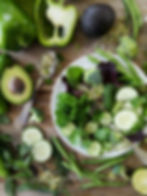
Fibre is the indigestible parts of plant foods, such as vegetables, fruits, grains, beans and legumes.
It is type of a carbohydrate that helps keep our digestive system healthy. It is tough and remains unbroken by the digestive system… It passes through the body as a bulk pushing along your other nutrients and stimulating the gut lining..
There are three different types of fibre which all have different functions and health benefits.
Soluble fibre helps to slow the emptying process in the stomach. In turn it helps you feel fuller for longer. It dissolves in water to form a gel-like material. It also helps to lower cholesterol and stabilise your blood glucose levels. How? .. Inside the small intestine, the fibre attaches to the cholesterol particles, preventing them from entering the bloodstream and traveling to other parts of the body.. it is found in oats, peas, beans, apples, citrus fruits, carrots, barley and psyllium.
Insoluble fibre does not dissolve but it attracts water to help to soften the contents of our bowels and support regular bowel movements. It also helps to keep us full and keep the bowel environment healthy. It is found in wholegrain breads and cereals, nuts, seeds, wheat bran and the cell walls of fruit and vegetables.
Resistant starch proceeds to the large intestine where it can assist in the production of good bacteria and improves bowel health. It is found in undercooked pasta, under ripe bananas, cooked and cooled potato and rice.Depending on how foods are prepared, the amount of resistant starch changes.
However, this classification is not so simple, as several different types of fibre can co-exist in the same food.
How much ?? The recommended daily fibre intake is:
men = 30g of fibre each day
women = 25g of fibre each day.

